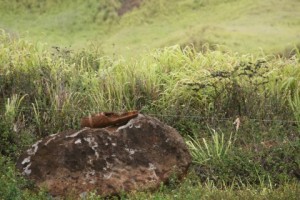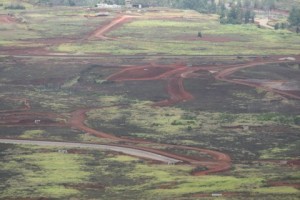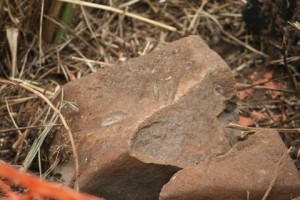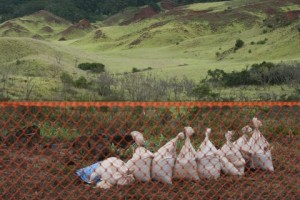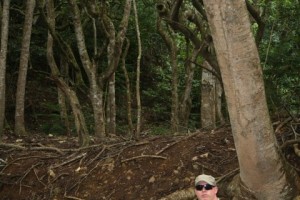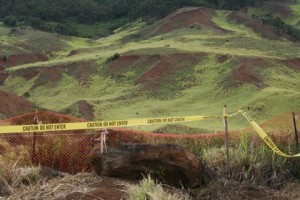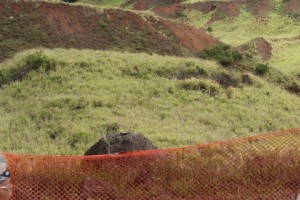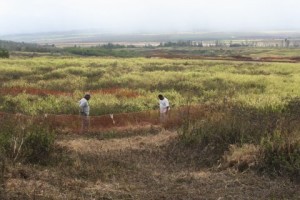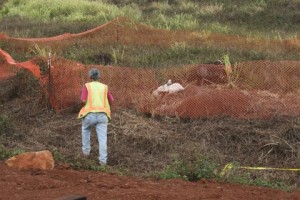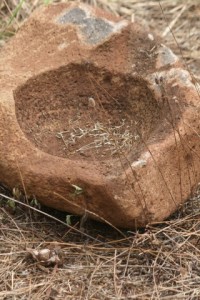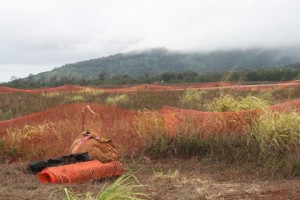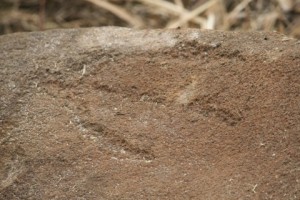Kudos to Joan Conrow for monitoring the depleted uranium (DU) issue at Schofield Barracks and writing a great article in the Honolulu Weekly. The Army tried to move ahead with construction plans for the Stryker Brigade expansion in an area contaminated with DU. But the Nuclear Regulatory Commission (NRC) must approve all activity by the Army involving radiological materials like DU. The Army only applied for a permit to “possess” DU, arguing that it intended to leave the material in place and not disturb it by any activities. But recently, the Army planned to burn grass and begin construction in a contaminated area, which would constitute a removal or clean up action, something not allowed under the Army’s requested permit. As Conrow reports, the NRC “snapped”. This may delay the Army’s plans. Furthermore, it reveals the dishonesty of the Army in its handling of contamination and cultural issues.
>><<
Stryker brigade snag
Stryker / Plans to construct a Stryker Brigade training area at Schofield Barracks ran afoul of the Nuclear Regulatory Commission (NRC) because the Army has no license to handle the toxic depleted uranium there.
This was underscored during the Army Corps of Engineers’ Oct. 29 informational briefing to the NRC in Washington, DC. (This reporter attended the meeting via conference call.)
The Corps had planned to begin the $80 million construction project this week with a controlled burn at the range. Instead, NRC staff warned the Corps that it risked sanctions if it proceeded because it has no license to possess, decommission or transport radioactive depleted uranium at Schofield.
Depleted uranium from weapons likely used in training between 1962 and 1968 was discovered at Schofield Barracks in August 2005, according to information available at the NRC’s website.
“I’m putting you on notice that this could constitute potential deliberate violations of NRC regulations,” NRC attorney Brett Klukan told Hans Honerlah, chief of the Corps’ Radiation Safety Office. “We don’t approve of what you’re doing right now. There needs to be a review and approval of what you do. You are outside the process.”
It was also disclosed at the briefing that the Army conducted an unauthorized cleanup of soil contaminated by depleted uranium at Schofield in 2008. Some of that material was already transported out of the state and some remains stored in Hawaii awaiting shipment.
“Under what legal authority did you remove this DU?” Klukan asked Honerlah.
“It was an Army call,” Honerlah said. “We had the choice of leaving it there or properly disposing of it, so we disposed of it.”
“So you didn’t really do that analysis to see if you had legal authority to dispose or transport this material,” Klukan pressed.
Honerlah said the cleanup work was done under the license of the Army’s contractor, Cabrera Services. But NRC staff said the Army, as the owner of the radioactive material, must hold the license.
“This shows the Army has been playing fast and loose with the rules,” said Kyle Kajihiro of Demilitarize Hawaii. “That’s what we’ve found all along. They’ve given misinformation to the public and to the regulators. That’s why we can’t trust that they [the Army] will do the right thing by the community.”
The NRC said it would investigate the 2008 clean up as part of its ongoing review of whether enforcement actions should be taken against the Army for unlicensed activities involving depleted uranium dating back to the 1960s.
The dense, toxic material served as ballast in the M101 “spotting rounds” used in Hawaii and elsewhere for training in conjunction with the Davy Crockett recoilless gun, one of the smallest nuclear weapons ever built.
The Army has applied to the NRC for a license to possess 17,600 pounds of depleted uranium at its American installations, including Schofield and Pohakuloa Training Area on Hawaii Island. But Klukan said the application was for possession only.
“We were never made aware the Army intended to pursue decommission,” he said, adding that the NRC had advised the Army that areas with depleted uranium should not be disturbed.
Klukan said the Army must either amend its application or seek a separate license to conduct the decommissioning work.
Klukan also rapped the Corps for attempting to proceed with the Stryker construction project without first running its plans by the NRC.
“Where did you get the authority to think the NRC wouldn’t need to review the remediation plans?” Klukan asked.
“We didn’t think it was decommissioning,” Honerlah replied. “We thought it was just cleaning up the area to make it safe for construction.”
NRC staff said it typically takes the agency a year to review technical plans.
“Usually an applicant gives us notice of an activity of such magnitude so we can rally resources,” Klukan said. “You guys want to start next week.”
Honerlah said all the plans have been completed in draft form, but only half have been finalized.
“Do we have to notify them [NRC] and get approval of all our activities?” asked a Cabrera staff member of his attorney during a break in the proceedings. The attorney, apparently unaware that his voice was not muted on the conference call, replied: “I guess that depends on how they interpret what we’re doing.”
Klukan also noted that the Army claimed in its application that it did not know how much depleted uranium it actually possesses because it could not conduct a full survey of its ranges.
“But now we’re finding in an area where you want to do a full survey, you can. I’m highly concerned about that. So it is possible to clean up the unexploded ordnance, which we were told was not possible.”
“Anything’s possible,” Honerlah said. “It’s a question of cost.”
Honerlah said he would need to talk to his supervisors about how the NRC’s stance would affect the construction schedule, although he did note “it could take years” to complete the agency’s review process.
Kajihiro said he hoped the delay would support efforts to gain protection for archaeological sites and burials that would be impacted by construction.
All original content copyright 2010 Honolulu Weekly.

